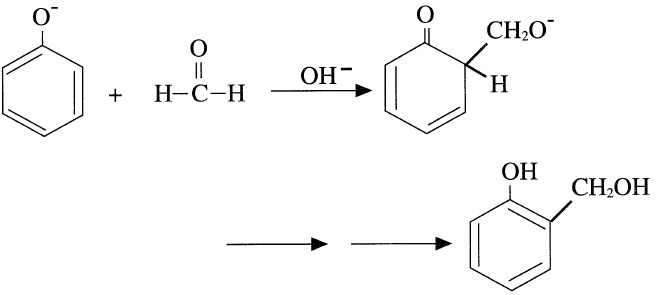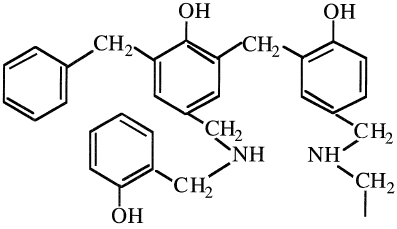

علم الكيمياء

تاريخ الكيمياء والعلماء المشاهير

التحاضير والتجارب الكيميائية

المخاطر والوقاية في الكيمياء

اخرى

مقالات متنوعة في علم الكيمياء

كيمياء عامة


الكيمياء التحليلية

مواضيع عامة في الكيمياء التحليلية

التحليل النوعي والكمي

التحليل الآلي (الطيفي)

طرق الفصل والتنقية


الكيمياء الحياتية

مواضيع عامة في الكيمياء الحياتية

الكاربوهيدرات

الاحماض الامينية والبروتينات

الانزيمات

الدهون

الاحماض النووية

الفيتامينات والمرافقات الانزيمية

الهرمونات


الكيمياء العضوية

مواضيع عامة في الكيمياء العضوية

الهايدروكاربونات

المركبات الوسطية وميكانيكيات التفاعلات العضوية

التشخيص العضوي

تجارب وتفاعلات في الكيمياء العضوية


الكيمياء الفيزيائية

مواضيع عامة في الكيمياء الفيزيائية

الكيمياء الحرارية

حركية التفاعلات الكيميائية

الكيمياء الكهربائية


الكيمياء اللاعضوية

مواضيع عامة في الكيمياء اللاعضوية

الجدول الدوري وخواص العناصر

نظريات التآصر الكيميائي

كيمياء العناصر الانتقالية ومركباتها المعقدة


مواضيع اخرى في الكيمياء

كيمياء النانو

الكيمياء السريرية

الكيمياء الطبية والدوائية

كيمياء الاغذية والنواتج الطبيعية

الكيمياء الجنائية


الكيمياء الصناعية

البترو كيمياويات

الكيمياء الخضراء

كيمياء البيئة

كيمياء البوليمرات

مواضيع عامة في الكيمياء الصناعية

الكيمياء الاشعاعية والنووية
PHENOL-FORMALDEHYDE RESINS
المؤلف:
sami matar & Lewis. F. Hatch
المصدر:
Chemistry of PETROCHEMICAL PROCESSES
الجزء والصفحة:
p 346
26-9-2017
1562
PHENOL-FORMALDEHYDE RESINS
Phenol-formaldehyde resins are the oldest thermosetting polymers.
They are produced by a condensation reaction between phenol and formaldehyde. Although many attempts were made to use the product and control the conditions for the acid-catalyzed reaction described by Bayer in 1872, there was no commercial production of the resin until the exhaustive work by Baekeland was published in 1909. In this paper, he deseribes the product as far superior to amber for pipe stem and similar articles, less flexible but more durable than celluloid, odorless, and fire-resistant.
The reaction between phenol and formaldehyde is either base or acid catalyzed, and the polymers are termed resols (for the base catalyzed) and novalacs (for the acid catalyzed). The first step in the base-catalyzed reaction is an attack by the phenoxide ion on the carbonyl carbon of formaldehyde, giving a mixture of ortho- and para-substituted mono-methylolphenol plus di- and trisubstituted methylol phenols:

The second step is the condensation reaction between the methylolphenols with the elimination of water and the formation of the polymer.
Crosslinking occurs by a reaction between the methylol groups and results in the formation of ether bridges. It occurs also by the reaction of the methylol groups and the aromatic ring, which forms methylene bridges. The formed polymer is a three-dimensional network thermoset:

The acid-catalyzed reaction occurs by an electrophilic substitution where formaldehyde is the electrophile. Condensation between the methylol groups and the benzene rings results in the formation of methylene bridges. Usually, the ratio of formaldehyde to phenol is kept less than unity to produce a linear fusible polymer in the first stage.
Crosslinking of the formed polymer can occur by adding more formaldehyde and a small amount of hexamethylene tetramine (hexamine, (CH2)6N4). Hexamine decomposes in the presence of traces of moisture to formaldehyde and ammonia. This results in crosslinking and formation of a thermoset resin:
 .
.
 الاكثر قراءة في كيمياء البوليمرات
الاكثر قراءة في كيمياء البوليمرات
 اخر الاخبار
اخر الاخبار
اخبار العتبة العباسية المقدسة

الآخبار الصحية















 قسم الشؤون الفكرية يصدر كتاباً يوثق تاريخ السدانة في العتبة العباسية المقدسة
قسم الشؤون الفكرية يصدر كتاباً يوثق تاريخ السدانة في العتبة العباسية المقدسة "المهمة".. إصدار قصصي يوثّق القصص الفائزة في مسابقة فتوى الدفاع المقدسة للقصة القصيرة
"المهمة".. إصدار قصصي يوثّق القصص الفائزة في مسابقة فتوى الدفاع المقدسة للقصة القصيرة (نوافذ).. إصدار أدبي يوثق القصص الفائزة في مسابقة الإمام العسكري (عليه السلام)
(نوافذ).. إصدار أدبي يوثق القصص الفائزة في مسابقة الإمام العسكري (عليه السلام)


















